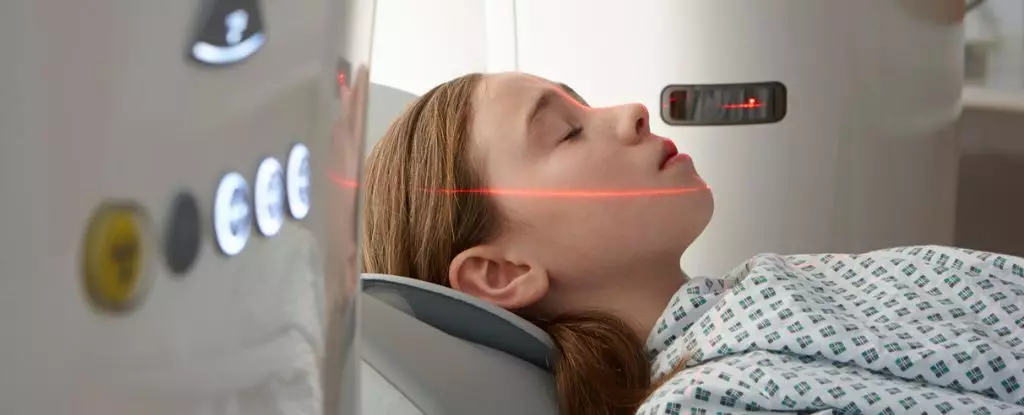In recent years, computed tomography (CT) scans have become a staple in modern medicine, revolutionizing diagnostic processes and saving countless lives. However, this technological marvel comes with an underappreciated shadow — the potential long-term health implications of repeated exposure to ionizing radiation. On the surface, the benefits of accurate diagnosis far outweigh the risks for most patients. Nonetheless, an alarming rise in the frequency of these scans—over 30 percent increase since 2007—raises critical questions about the broader implications for public health. Are we inadvertently inviting future health crises on a grand scale with routine imaging?
The crux of the concern lies in the cumulative effect of low-dose radiation. While a single scan may seem harmless—equivalent to environmental exposure over a few years—the aggregate impact across millions of procedures is profound. Scientific models, drawing from historical nuclear events and atomic bomb survivor data, predict that a fraction of future cancer cases in the U.S. could be attributed to these scans. Some estimates suggest that up to 5 percent of new cancer diagnoses might be linked to low-level radiation from CT scans, translating to an estimated 100,000 plus future cases annually. Such figures are staggering, positioning CT imaging not merely as a diagnostic tool but as a potential contributor to the very diseases it aims to prevent.
This paradox calls for a nuanced understanding: While the individual risk of developing cancer from a single scan remains minimal, the scale of usage transforms these small risks into significant public health concerns. This underscores the importance of critical assessment when ordering imaging tests, avoiding unnecessary scans that provide no tangible benefit. The danger isn’t just theoretical; it’s rooted in the reality of overmedicalization and the potential for preventable harm embedded within routine practice.
Balancing Diagnostic Necessity and Unintended Harm
The debate about low-dose radiation’s carcinogenic potential often hinges on extrapolated data. Studies involving atomic bomb survivors and nuclear accident victims reveal increased lifetime cancer risks following significant radiation exposure. However, whether these findings directly translate to the doses received during typical diagnostic scans remains uncertain. Critics argue that the biological impact at low levels is not sufficiently established, and many scientists advocate for the continued use of CTs when medically justified. These scans are undeniably powerful in detecting conditions like tumors, neurological injuries, or internal bleeding—a form of medical progress that can spell the difference between life and death.
Medical experts emphasize that the risk of harm must always be contextualized. The natural lifetime risk of developing cancer is already significant, and in many cases, the benefit of early and accurate diagnosis far outweighs the hypothetical danger posed by minimal radiation exposure. Moreover, modern CT technology has advanced to reduce radiation doses significantly. Efforts to optimize scanning protocols and develop alternative, radiation-free imaging modalities present promising avenues for minimizing potential risks without sacrificing diagnostic accuracy.
Interestingly, studies show that the highest relative risks are observed in vulnerable groups, particularly children and pregnant women. The developing organs and tissues in infants and adolescents appear more susceptible to radiation damage, correlating with increased rates of thyroid and other cancers among these populations. This demographic reality underscores the necessity for tailored strategies, advocating for stricter guidelines and alternative methods in pediatric imaging.
Nonetheless, the crux of the issue isn’t just about the science—it’s about the attitude towards medical imaging. Physicians and patients alike must foster a culture of cautious utilization, whereby radiation exposure is weighed carefully against clinical necessity.
Towards More Responsible and Informed Use of Imaging Technology
Moving forward, the medical community faces the pivotal task of balancing technological prowess with ethical responsibility. This involves not only refining clinical guidelines but also empowering patients with knowledge. Patients often assume that more testing inherently leads to better outcomes, yet this isn’t always the case. The emphasis should instead be on precise, indication-based imaging that maximizes benefit and minimizes unnecessary exposure.
Healthcare systems should prioritize developing and promoting radiation-sparing techniques, such as MRI and ultrasound, whenever feasible. Additionally, implementing dose-tracking registries can improve awareness of cumulative exposure, enabling more informed decision-making. Increasing transparency about potential long-term risks can catalyze a cultural shift among clinicians towards more judicious use of CT imaging.
Critics also argue for stricter oversight and education. Radiologists, technologists, and referring physicians must be vigilant, understanding that technology is only as good as its application. They should advocate for personalized imaging strategies—considering patient age, health status, and the diagnostic question—rather than defaulting to routine scans. Importantly, patients should be encouraged to question the necessity of scans and seek second opinions when appropriate.
Given the current limits of conclusive scientific evidence establishing causality at low doses, the prudent course is to practice a “minimum necessary” principle, akin to antibiotic stewardship. By doing so, the healthcare system can harness the life-saving capabilities of CT scans without compromising future health outcomes.
Ultimately, embracing a culture of responsible imaging is not about instilling fear but fostering informed decision-making. As technological advances continue, so must our ethical standards, ensuring that in our pursuit of diagnostic excellence, we do not inadvertently become architects of future health burdens.

